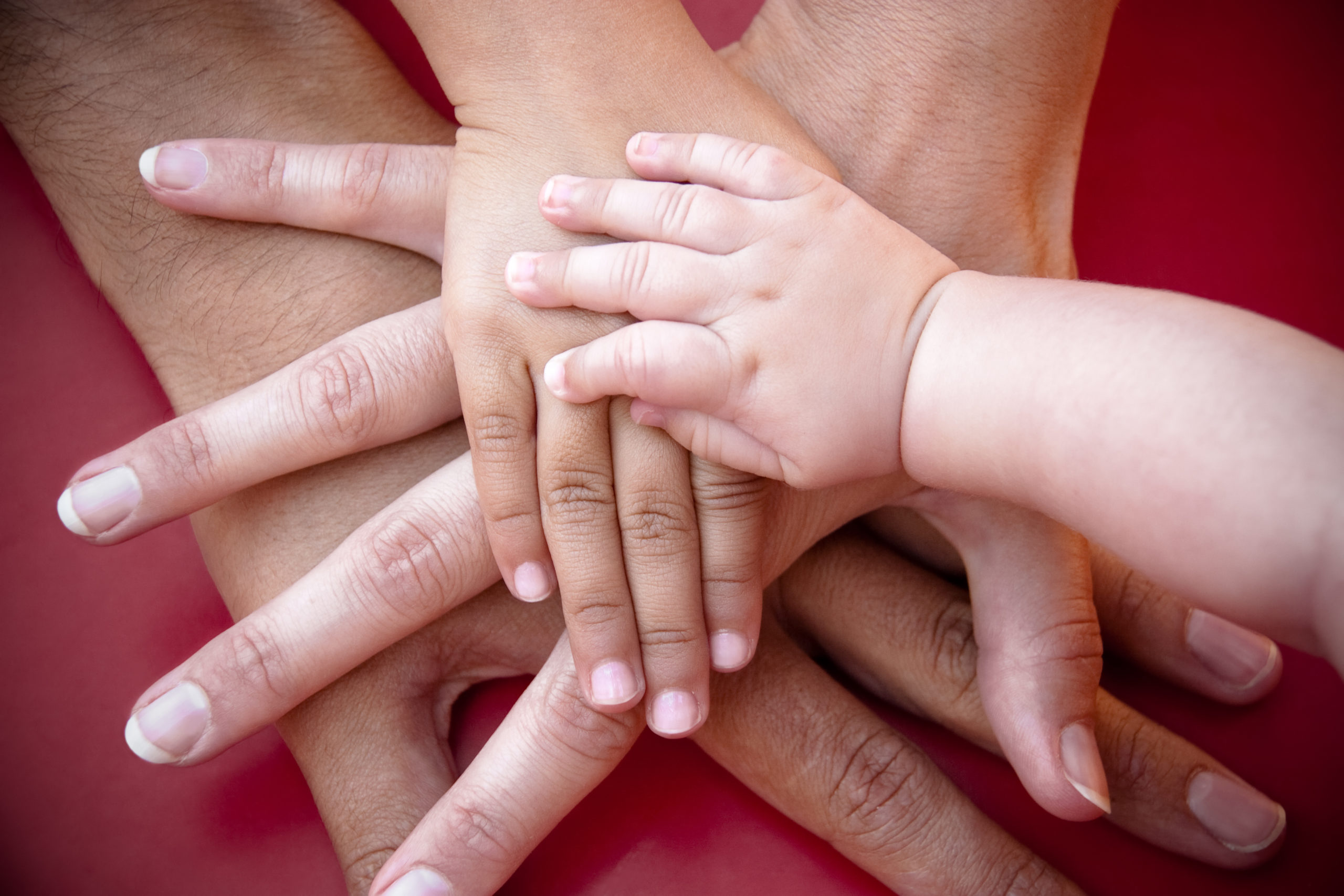
Family life has long frustrated economists who struggle to measure the various utility functions involved in spending 18 or more years of one’s life changing diapers, listening to screaming fights, spending money on food and daycare and diapers and summer camps, and cleaning up vomit on road trips.

A new paper by Ariel Karlinsky and Michael Sarel published in the Israel Economic Review helps clarify the picture of how much kids cost in immediate monetary terms, which is a helpful thing to know. Traditional approaches have focused on comparing household income with household expenditures between households with and without children. The authors note that this very narrow monetary analysis doesn’t tell us much about anything. It ignores the question of living standards, the fact that people’s preferences and spending habits change dramatically after they have children, and the fact that children of different ages cost significantly different amounts of money (and time). Karlinsky and Sarel refine the traditional model through measures of standard of living (based on the proportion of income spent on shared household products), total household expenditure, and age and number of children. While this kind of analysis doesn’t — by design — have anything to say about broader economic sacrifices families make in order to raise children, it does clarify questions that may be helpful to policy makers or to judges in deciding child support payments, as the authors note. The authors also created a fun and useful calculator for estimating the costs of raising children at various income levels, ages, and numbers of children that you can play with here.
But even with the improvements they make to traditional methodologies, the study and its intentional limitations highlight how hard it is to study whether kids are worth it. They also emphasise that the kinds of economic and other sacrifices we make for our kids may be unmeasurable with any tools we have.
How and In What Ways Kids are Worth It
There seem to be three ways (at least) of thinking about the costs and benefits of parenting. The narrow version, which Karlinksy and Sarel refine in their paper, focuses on the upfront monetary costs involved in having children. Whatever the various cost estimates and models, this is relatively straightforward (which is not to say simple).
Where things get more complicated though, is the second level of analysis, the one that policymakers really want, particularly for areas like gender equality and welfare policies. Areas the study does not cover, largely because these questions remain too complex, are questions of opportunity costs involved in raising children in terms of lost income, particularly for women.
As the authors note, we don’t have accurate data on how parenting affects male work habits, particularly over lifespan, but there’s a fair amount of research that demonstrates that women take an economic hit, not only in the direct costs of childrearing, but also in lost income over lifespan. In the COVID-19 era, more and more women are struggling under the combined burdens of working or searching for work while managing children’s schoolwork at home and also contributing to the usual burden of housework and food preparation. This takes a toll on women’s earnings and mental health. A recent U.S. report finds that over 800,000 women left the workforce between August and September alone, representing a full 80% of the workers who left. The timing of this mass exodus – just before a brutal school year with large numbers of children learning at home – is hardly accidental.
Questions of equity are also lost in these more narrow analyses. Karlinsky and Sarel, for example, use the standard adult two parent household as their baseline, which makes sense in a narrow material analysis like this one, but that decision makes it difficult to estimate the lifetime costs of having children for a lot of parents (more so in the United States, where a quarter of children live in single-adult homes), since single parent households face burdens dual parent households do not, and mothers face economic burdens that fathers do not, which are compounded if couples divorce. Even with the addition of child support (whose ad hoc character in Israel is one reason the authors leave single parent families out of their model), single parents face lost income due to childcare limitations, unshared direct costs like mortgages and childcare, or lost time shuttling children around or supervising housework. Dual parent households either do not face these issues, or they absorb them more easily because they have twice the manpower.

Similarly, the narrow expenditure model may obscure patterns in how the costs of child-rearing are distributed. Breastfeeding, for example, is cheaper in direct costs than formula, but in fact has an array of indirect costs that are hard to measure. Working mothers must have time to pump (or we must take into account a mother’s lost wages if she chooses to stay home). For low income women, particularly hourly wage earners or those who work in physical jobs where pumping may be extremely difficult, formula may be “cheaper” than breastfeeding on a variety of measures. But because these are indirect costs, the cash outlay for an infant may be higher for lower income wage earners who use formula than it is for higher income salaried workers who can more easily breastfeed, a disparity that only becomes apparent once we dig past the average expenditures and start measuring indirect costs. And in the U.S. women below a certain income level qualify for WIC, which covers formula, so one would have to take welfare benefits into consideration too. There may in fact be a group of lower middle class parents who pay proportionally more than either the very poor or the upper middle class, simply because they are more likely to be single parents, face greater indirect costs of parenting, do not benefit from economies of scale, and face greater opportunity costs. But this same group also does not qualify for government aid. Karlinksky and Sarel’s model does suggest, unsurprisingly, that the poor pay proportionally more to raise children than the wealthy do.
This broader analysis wasn’t the goal of the paper, so none of this is a criticism of the authors, but merely a reflection that what we think we know about families in the aggregate is much more complicated when we look at individual families and how income, family structure, education, and support networks affect the cost of raising children, both in economic and in more subjective terms.
Finally, there’s a much deeper question that the authors allude to when they argue that prospective parents might use their cost estimator to determine whether or not to have children. I’m not sure most parents think about parenting the way economists do. The question most parents ask is not “How much do kids cost?” but “Do kids make us happier? Are we better people for having children? Do the economic sacrifices we make balance out against the immeasurable joy and anxiety and grief that parenting entails?” These are not questions for economists, but one that most of the parents I know think (usually) has a relatively easy answer. I suspect this is one area where economics will continue to be trumped by a much more complicated and unquantifiable set of values. And that’s okay.
Lauren Hall is associate professor of political science at Rochester Institute of Technology. She is the author of The Medicalization of Birth and Death (Johns Hopkins University Press, 2019) and Family and the Politics of Moderation (Baylor University Press, 2014) as well as the co-editor of a volume on the political philosophy of French political thinker Chantal Delsol.

READER COMMENTS
Steve
Nov 11 2020 at 3:11pm
Tangential to the main thrust of the article, but all of my childless friends think that the diapers and vomit and lost sleep and screaming is like 100% of parenting. Sure that stuff happens, but it’s like 1% of what I think about. It’s a rounding error in the calculus of “are kids worth it”.
RPLong
Nov 11 2020 at 3:57pm
I’ll add that, at least in my experience, it’s a lot more unpleasant cleaning up a stranger’s vomit and excrement than it is cleaning up your baby’s. It’s not what I’d call “fun,” but there’s something about the way a parent’s brain processes it. It’s no longer “a steaming pile of crap,” and instead becomes, “taking care of my baby,” which is actually a very pleasant thought.
Michael Pettengill
Nov 11 2020 at 4:22pm
The benefits of children to parents is the children supporting the parents in later life.
“Before capitalism” this was obvious and direct. The family unit spanned generations, whether hunter gatherer, nomadic herders, or farmers. Tools were the personal goods of individuals or family units. The family unit produces what it consumes and consumes what it produces.
With capitalism, tools become property separate from the worker/consumer. The tool is build by workers for an owner who employs workers to produce goods consumed by other generally not involved in building the tool or using it to produce. Thus the producers and consumers are not tied together even for a production cycle, much less a lifespan.
Society has replaced the family for children caring for the parent. Even if you go stateless and argue the person builds up a stock of capital that supports the person in old age, children are required to operate it and to consume its production, while supporting the owner as the capital is consumed.
The children may not be related in the least to the capital owner, but they must exist, or the old capital owner dies, because his capital has no value.
The problem for society, the collection of individuals, is ensuring the incentives to have children are high enough to sustain society. Government in the US and Europe did this function well from say 1930 to 1980 as individuals ceased to be tied to their parents. Building new cities populated by mobile individuals doing work unrelated to their parents while taxes transferred consumption across time and space and generations via Social Security.
Society was a collective that freed individuals from the lifelong tie to a family.
But there is a shift in this view from that of a collective toward independent individuals. Some argue for returning to the family unit, but now the family needs to be the capital owner and employees engaged in trade with other family units, which are distant and unknown. Which makes ensuring the capital is able to produce what unknown consumers will desire uncertain, especially over generation spans.
One might see not having children as being an individualistic free rider, in the short run. Long run its collapse.
What I see erased in economic thought in the past few decades is the critical nature of consumers. With no consumers, there is no economy. I often see arguments that replacing workers with robots is desirable because the cost of workers is eliminated. If robots replace workers, then children are no longer needed. Robots can be built and put to work in a short time instead of requiring the expense and delay of 18 years to create a worker.
Logically, eliminating the old, who are a burden, is the next step in a faster growing, more profitable economy.
Without children, there are no consumers. Without consumers, there is no economy.
Thomas Strenge
Nov 12 2020 at 10:00am
Keynes is often quoted that in the long run we’re all dead. However, children are the closest and easiest way we get to immortality. It really is an adventure in entrepreneurialism. Here is this investment we make, not for him, but for us. This beautiful being full of all the potential that a new life offers. Sure, maybe he’ll help in retirement, but that’s not what we thought about when we decided to have a child. But it really is all about hope for the future. The current cost of diapers is not part of the consideration (although disposable versus cloth is evaluated based on time and money).
T Boyle
Nov 13 2020 at 12:54pm
The child support and family law system has offered us a very simple way to address this question, “are children worth it”?
Learn about child support levels – don’t argue with them, just learn what they are. Then, ask yourself two questions:
1) if I had custody, would the level of support I would receive be sufficient that I would be happy to have the kids, knowing the implications for career and lifestyle?
2) if my ex had custody, and I were only able to spend limited time with the kids and had little voice in how they were raised, would I be happy to pay that much in support to my ex, knowing the implications for my lifestyle and restrictions on career choices/flexibility*?
(* Unlike taxes, child support is a fixed dollar amount, generally about a quarter of your after-tax earning ability for one child, and a bit less than half for two. Your payments will not go down if you switch from a 60-hour job to a 40-hour one that pays less, or you go back to college, or take a career break – or, in some cases, get laid off but have managed to save money.)
If the answer to either question is “no”, then children are not for you.
mike
Nov 14 2020 at 7:25pm
One other issue not talked about enough in interpreting if people really find kinds worthwhile, its pretty much the only major life choice that is unalterable for 18 years. Obviously friends, marriage can change, you can sell a house, sell a car , move etc
but kids are 18 (22+) committment, and that’s really not comparable to any other angle of life
Mm
Nov 15 2020 at 7:33am
Overwhelming issues with selection bias precludes assigning much value to such studies- like much of the social science literature.
Comments are closed.